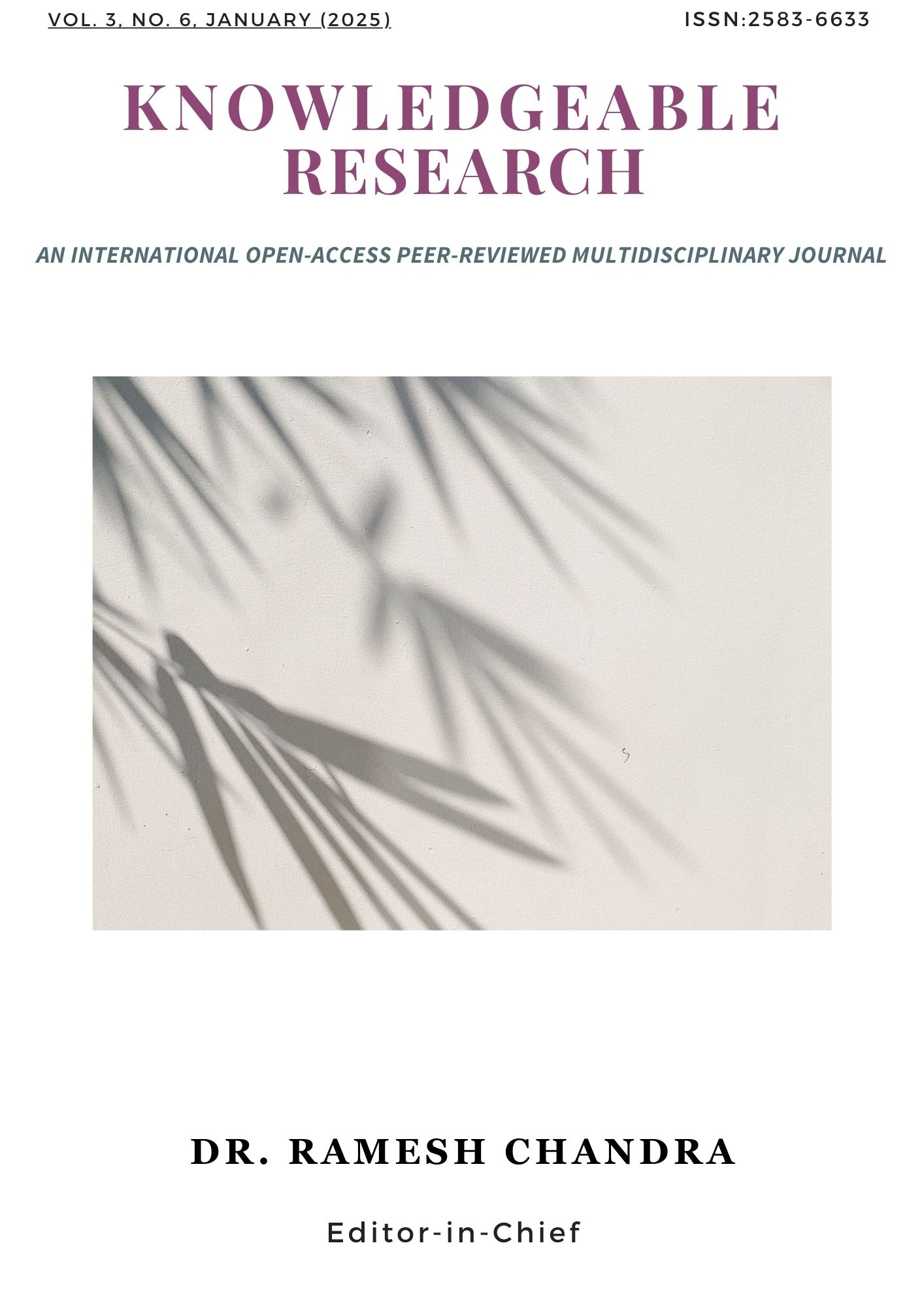Consciousness of water conservation in Atharvaveda Samhita in present perspective
Main Article Content
Abstract
The Atharva Veda Samhita, which is an important part of ancient Indian knowledge and culture, provides deep consciousness and perspective in the context of water conservation. Considering water as the basis of life, it has been seen as a very important and sacred element in the Atharva Veda. The importance of water has been emphasized in it and its conservation has been stated as the responsibility of the society. In the Atharva Veda, various forms of water have been worshiped, such as the water of rivers, lakes and ponds has been considered life-giving. In the Vedas, water has been linked to "age", "health" and "prosperity", which makes it clear that without the conservation of water, the balance of society and environment is impossible. For example, the Atharva Veda talks about protecting the sources of water and using water judiciously, so that water is not wasted and it is available continuously.
In the present times, water crisis has become a serious problem, and this consciousness of the Atharva Veda, along with understanding the importance of water, also underlines the need for its conservation. From this point of view, this Veda is not only important from a religious or cultural point of view, but also provides a deep message for the solution of modern environmental crisis. The main objective of the consciousness of Atharva Veda can be to explain to today's generation the need for water conservation, protection of water sources and judicious use of water.
Thus, the consciousness of water conservation in Atharva Veda not only reflects the traditional beliefs of the ancient society, but also proves to be very relevant and useful in the present times.
Veda scholars consider them unforgettable on some grounds in this context. Just as other branches of Vedanga Vidya are in their own self-respecting directions, Atharva Veda seems to have the whole life in its fold. It includes all aspects of life like the deep mysteries of creation, divine prayers, yagya experiments, disease treatment, marriage, reproduction, family, social system and self-defense. Other streams of Veda have 'pure science along with esoteric knowledge, but Atharva Veda has practical science along with esoteric streams of science. In order to make life happy and free from sorrows, the sages have prescribed the yajna rituals. For their complete execution, four priests are required. Out of these, the most important priest Brahma is directly related to this Veda. Brahma has a prominent place among the priests of the Yagya Sansad. The responsibility of Brahma is to inspect the various rituals of Yagya and to rectify the errors. For this, it is essential for him to be a scholar of all Vedas and he should also be strong in morale. Both types of rituals of peace-enhancing and witchcraft are described in the Atharva Veda. The king has a special need for peaceful nourishing deeds and great donations like Tula Purushadi. Which is the main subject of the Atharva Veda. Matsya Purana says that the priest should be well versed in Atharva Mantra and Brahmin. In the Atharva Parishishta, it is even written that the nation in which a priest who is knowledgeable of the Atharva Veda and is well versed in peace rituals lives, that nation becomes free from disturbances and attains growth. Therefore, the king should worship the Atharva Veda scholar and the priest who has controlled his senses with respect and charity every day. Keeping in mind this importance of the Atharva Veda, Possibly some Acharyas have accepted it as the first Veda.
Downloads
Article Details
Section

This work is licensed under a Creative Commons Attribution-NonCommercial 4.0 International License.

